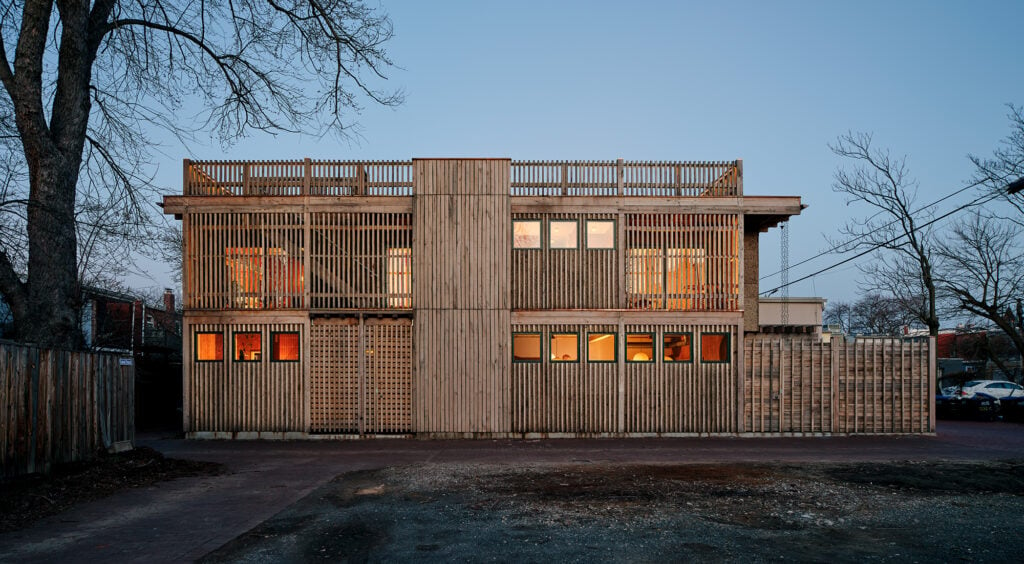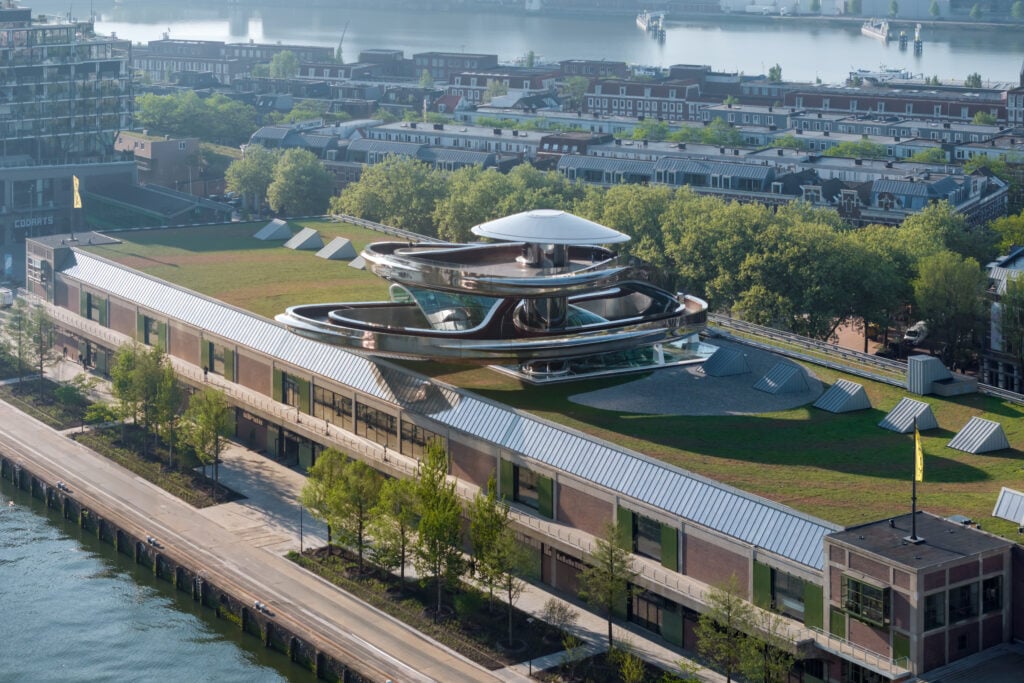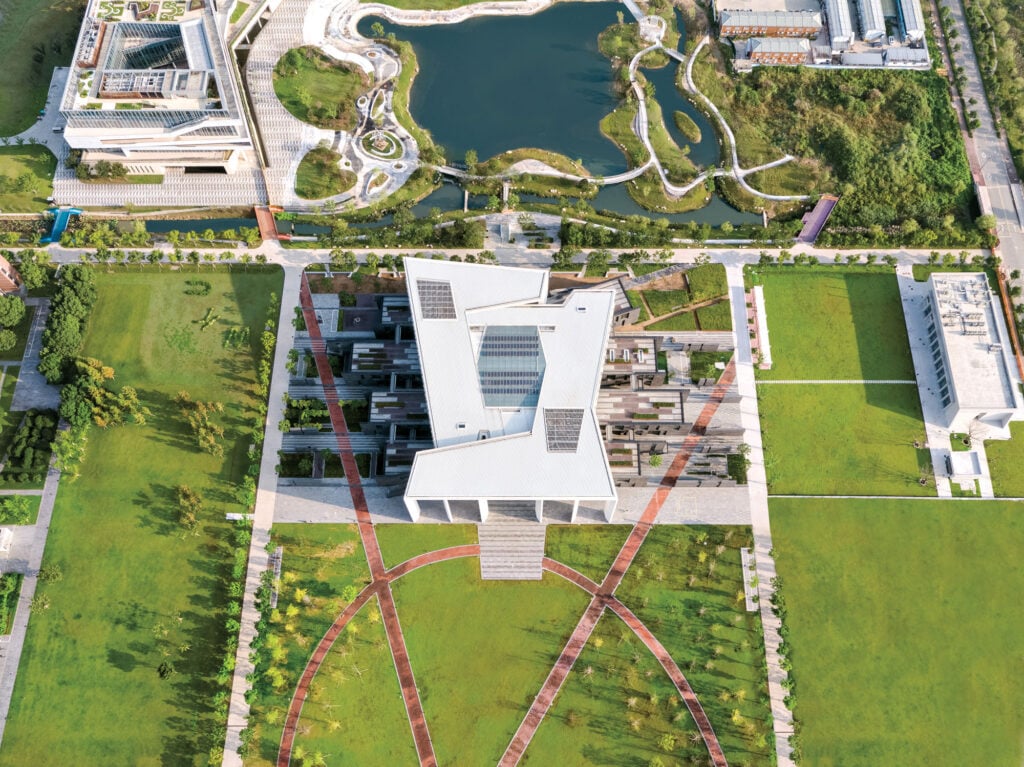
April 14, 2022
Ge Hekai Hall at Wenzhou-Kean University Unites Students and Disciplines
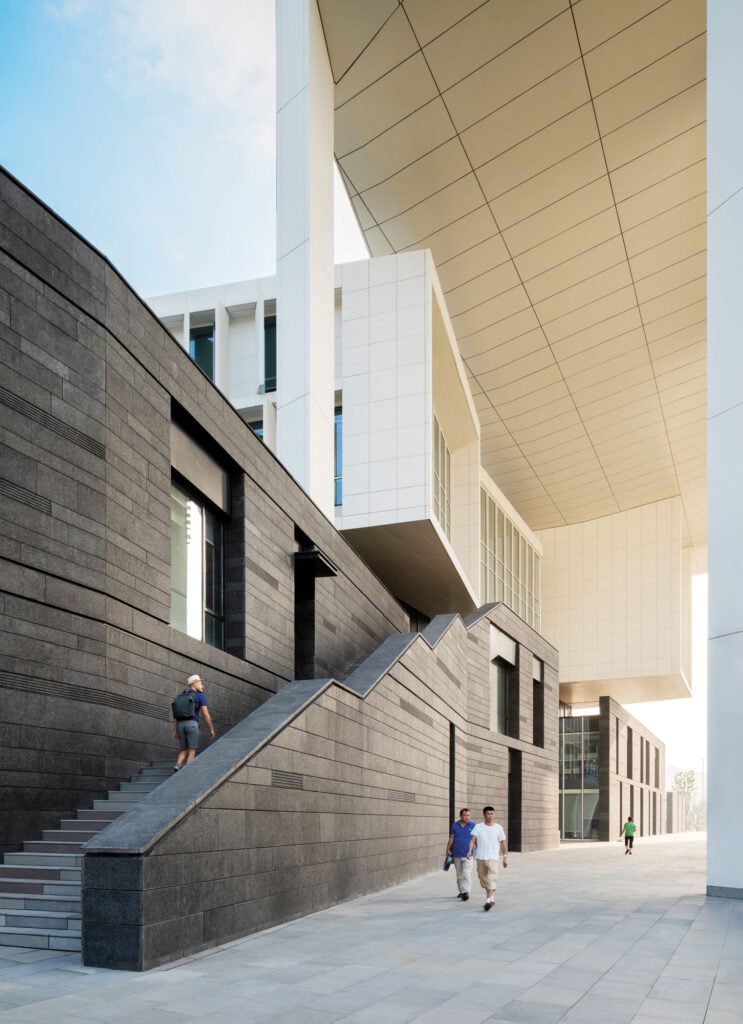
The Wenzhou-Kean campus, a 175-acre site surrounded by mountains about an hour south of Shanghai, was created through a master plan by Michael Graves’s office that placed the university’s architecture and design schools (both named for Graves himself) at its center. To its north, the hall dialogues with Perkins and Will’s Student Learning Center, a hybrid library and activity center slated for completion next year. To its south, Ge Hekai extends to an expansive 3.5-acre quadrangle, whose perimeter pathway forms a tilted ellipse crossed by intersecting diagonal paths leading to the hall’s east and west gardens.
The civic-scaled design earns its focal position on campus with several gestures meant to express China’s history, its forward-thinking goals, and the concept of international collaboration. While the hall presents a modern, formal portico as a grand gateway at its southern facade, it also uses the concept of a Chinese urban district to incorporate a series of alleyways, lofts, and bridges that become a sort of “three-dimensional mini campus” accessible to all students, says Ruble.
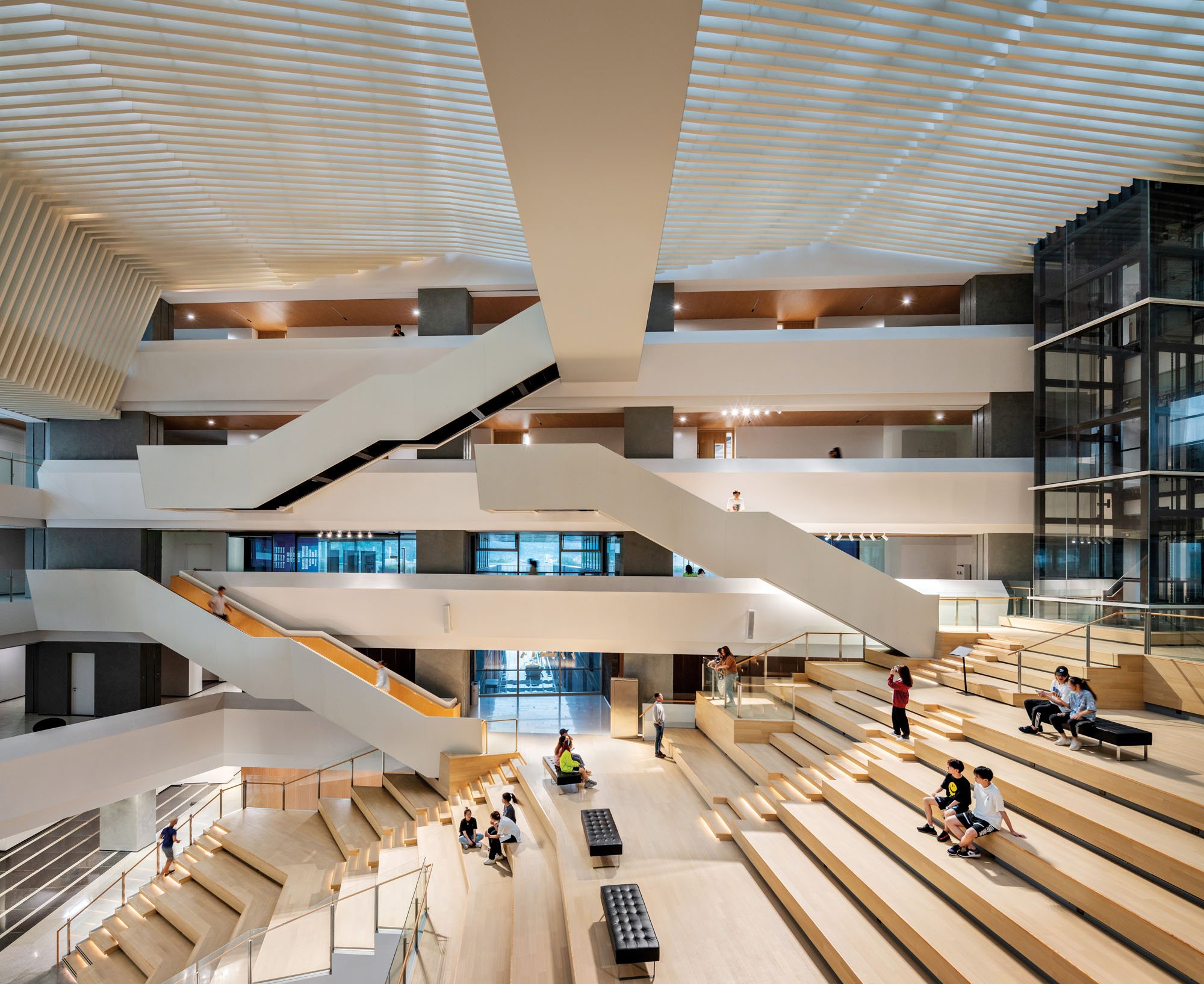
Eight oblong “bar” buildings, clad in Angola black granite, form the structure’s three-floor base, hosting community spaces and classrooms, flexible exhibition areas, a makerspace, a digital-media auditorium, and a lakeside café. Punched windows and deep inset ledges emphasize the three-foot thickness of the walls while also providing interior shading and hiding mechanicals and ductwork. The bars are connected by a network of exterior bridges that circumnavigate the building and act as structural braces, reducing steel in each of the wings by resisting torsional movement. Each bar has a landscaped rooftop that students can use around the clock, while the surrounding landscape extends the rooftop gardens to the ground, stitching the building into its context with 16-foot-high freestanding stone walls that form a series of outdoor rooms.
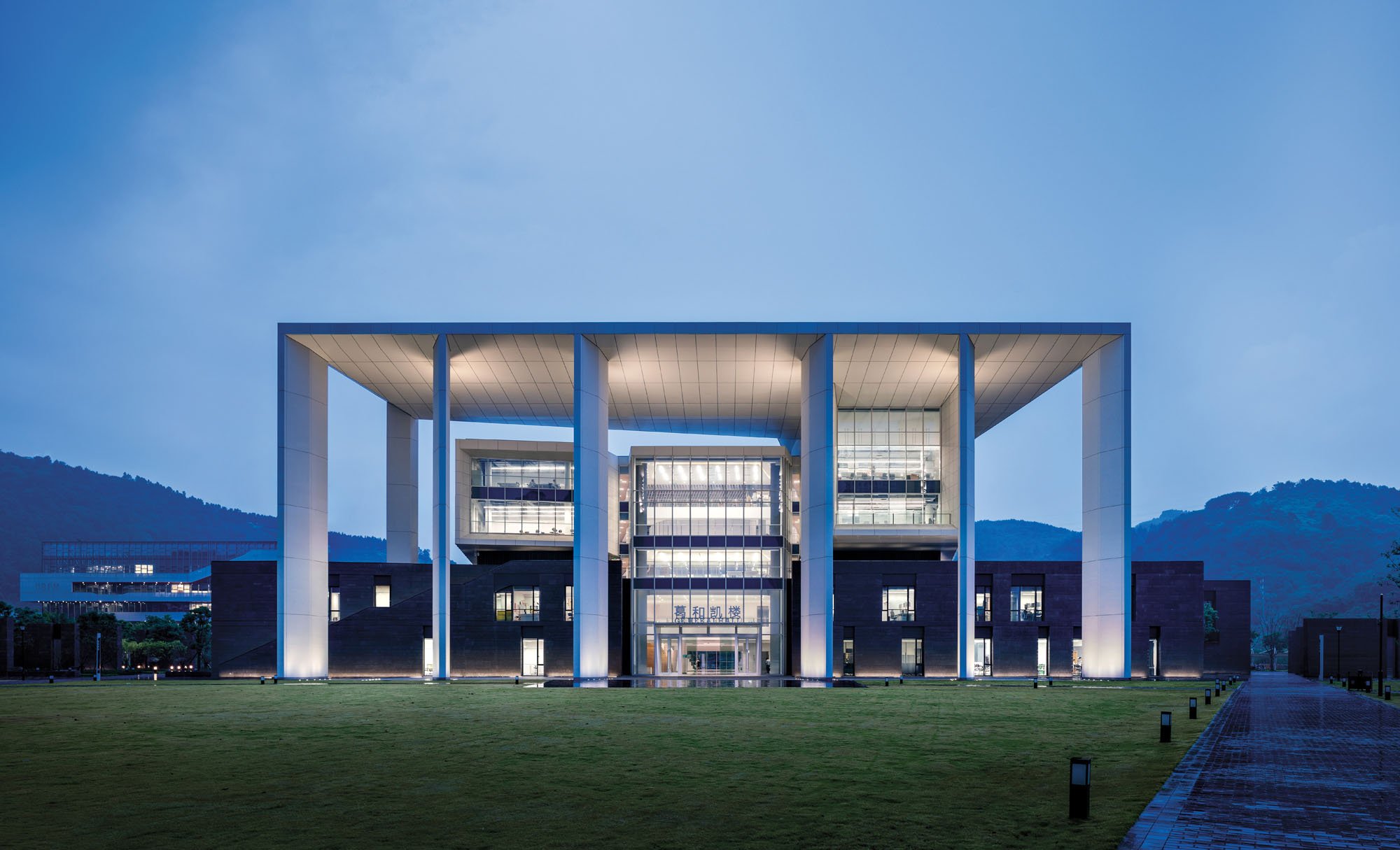
The bars are capped by two striking, daylit studio loft buildings, which form the fourth and fifth floors and offer more traditional architectural design studio spaces. These are fronted with ultra-high-performance concrete (UHPC) sunshades. (The use of UHPC throughout the project allowed for a 12 percent reduction in overall steel structure.) Shading was also important for the hall’s central forum, whose atrium features a hexagonal skylight, and where the architects introduced a concept they call bo lang, meaning “wave.” White ceiling slats meander in angular directions, creating a play of light and texture above the grand space. Custom terrazzo flooring in parallelogram shapes throughout the hall also expresses these angles.
As the hall welcomes students from near and far, and (pandemic permitting) from different disciplines across campus, it is on its way to achieving its potential as a campus gathering place and an incubator for the future. “This is a place for architecture, urban and industrial design, and computer science; by the time you put all those things together, you’re talking about the future fabric of society,” says Ruble.
Would you like to comment on this article? Send your thoughts to: [email protected]
Related
Profiles
BLDUS Brings a ‘Farm-to-Shelter’ Approach to American Design
The Washington D.C.–based firm BLDUS is imagining a new American vernacular through natural materials and thoughtful placemaking.
Projects
MAD Architects’ FENIX is the World’s First Art Museum Dedicated to Migration
Located in Rotterdam, FENIX is also the Beijing-based firm’s first European museum project.
Products
Discover the Winners of the METROPOLISLikes 2025 Awards
This year’s product releases at NeoCon and Design Days signal a transformation in interior design.







